Ndumo Game Reserve: KwaZulu-Natal’s Birding Haven
Ndumo Game Reserve is a small green dot on the map between the uSuthu and Pongola rivers, but don’t let its modest size fool you. This compact reserve, tucked into the northeastern corner of KwaZulu-Natal, offers an extraordinary variety of ecosystems, animal encounters and birdwatching opportunities that rival many much larger parks.
At just over 10,000 hectares, it might be one of the smaller reserves in the region, but its diversity and remote charm make it a standout destination for nature lovers, photographers and birders.
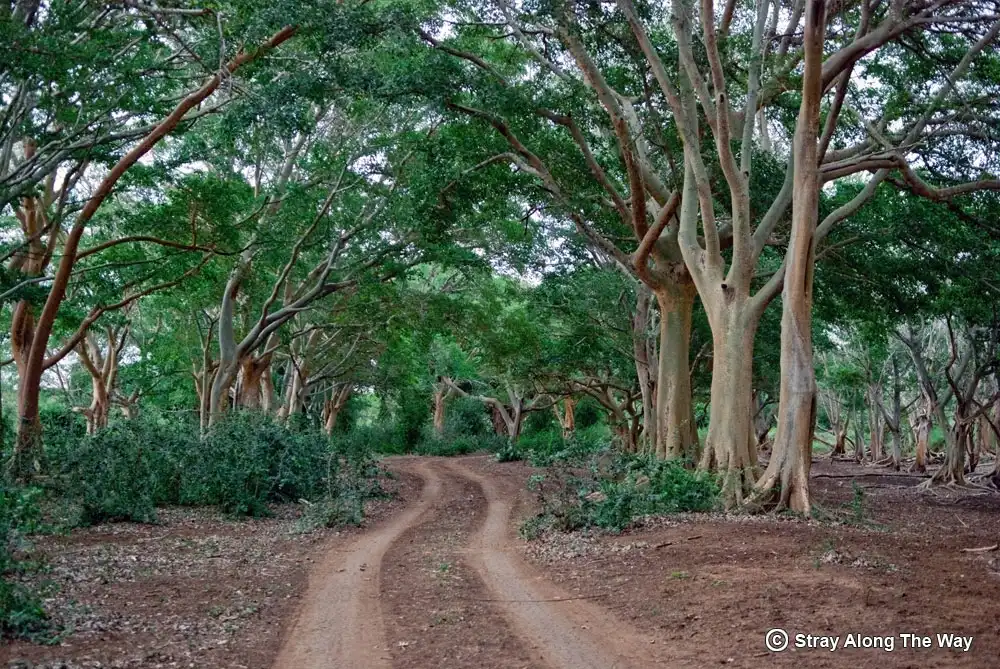
Thanks to its location within a transition zone of tropical and subtropical climates, Ndumo hosts a rare mix of habitats: pans and floodplains, swamp forests, acacia thornveld, and sand forests that support an impressive range of species. This unique ecological makeup has earned it national acclaim, especially among birdwatchers, who flock here for the chance to spot some of the rarest feathered residents in the country. Whether you’re meandering along the network of gravel roads or stepping out on a guided walk, every visit offers the potential for an unforgettable sighting.
Ndumo Game Reserve Highlights
What to expect from Ndumo Game Reserve
Tucked away in KwaZulu-Natal’s far northeastern corner, Ndumo feels wonderfully remote. The drive to reach the park is longer than for many other reserves, but the reward is a peaceful and uncrowded experience that feels worlds away from busier parks like Kruger or Hluhluwe-iMfolozi.
Despite its smaller footprint, Ndumo holds a surprising range of ecosystems. As you explore, you’ll travel through acacia savannah, grassy floodplains, riverine woodland, and patches of ancient sand forest. This variety supports everything from massive Sycamore figs and Yellow Fever trees to aquatic reed beds teeming with life. Even seasoned visitors to South African parks often find themselves surprised by how different the vegetation and topography feel.
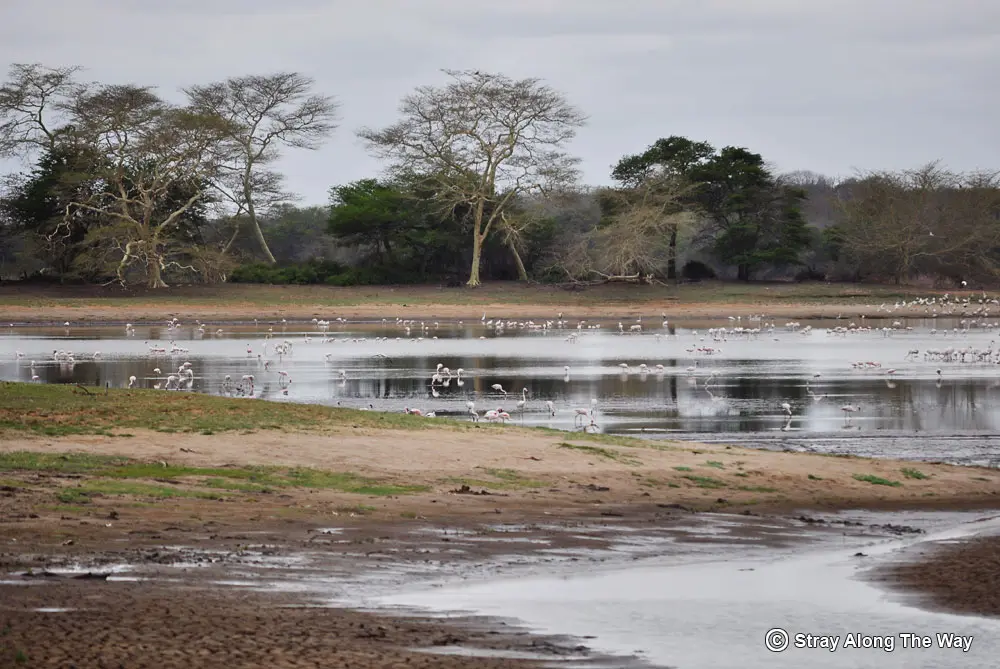
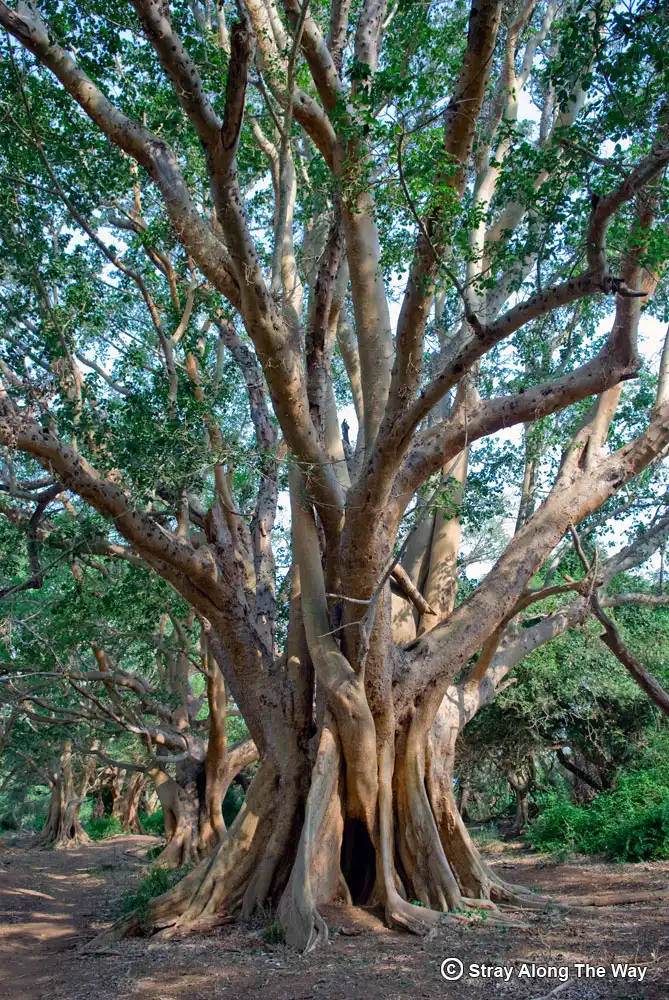
The reserve can be self-driven with a standard car, though higher clearance is an advantage, especially during or after rainfall. Some roads, especially those closer to wetland areas, become slippery or muddy during summer storms. Be cautious when navigating these areas and check with the reception desk for the latest road conditions.
While the reserve doesn’t house the full Big 5, it offers a gentler kind of wildlife viewing that suits those interested in more than just lions and elephants. Buffalo, giraffe, hippos and crocodiles are often seen, as well as numerous antelope species such as nyala, bushbuck, suni and red duiker. Predators are scarce, though leopards are occasionally spotted.
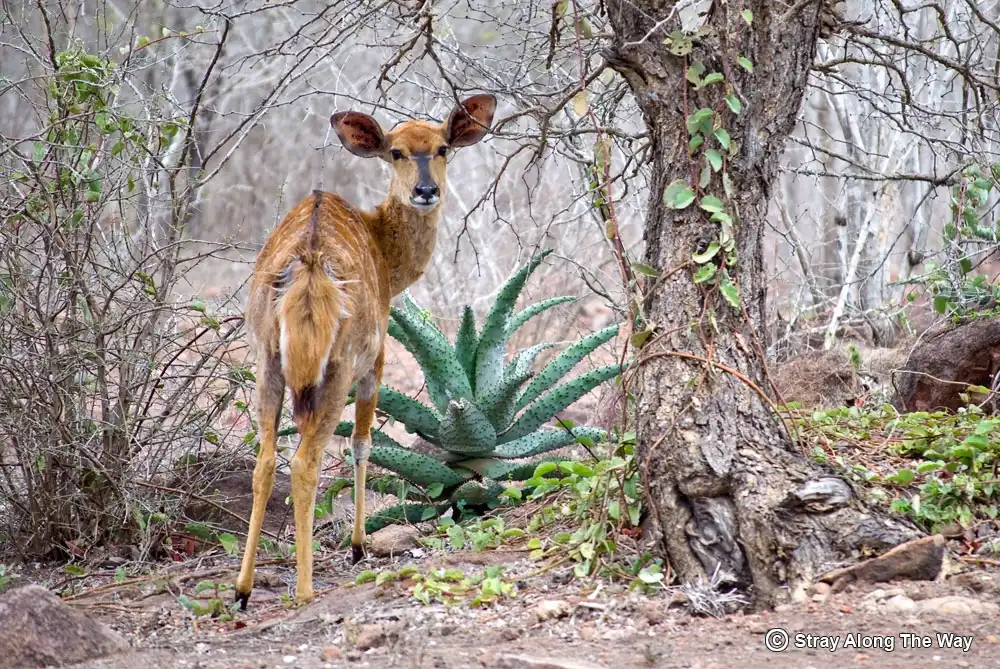
Some of the best parts of Ndumo are the elevated hides and picnic areas, perfectly placed beside pans and waterholes. These spots are ideal for photography and quiet observation. It’s not uncommon to sit in a hide for 30 minutes and witness dozens of bird species, water monitors, antelope and sometimes even crocodiles or buffalo moving through. If sightings are slow, simply sit back and enjoy the quiet immersion in the landscape.
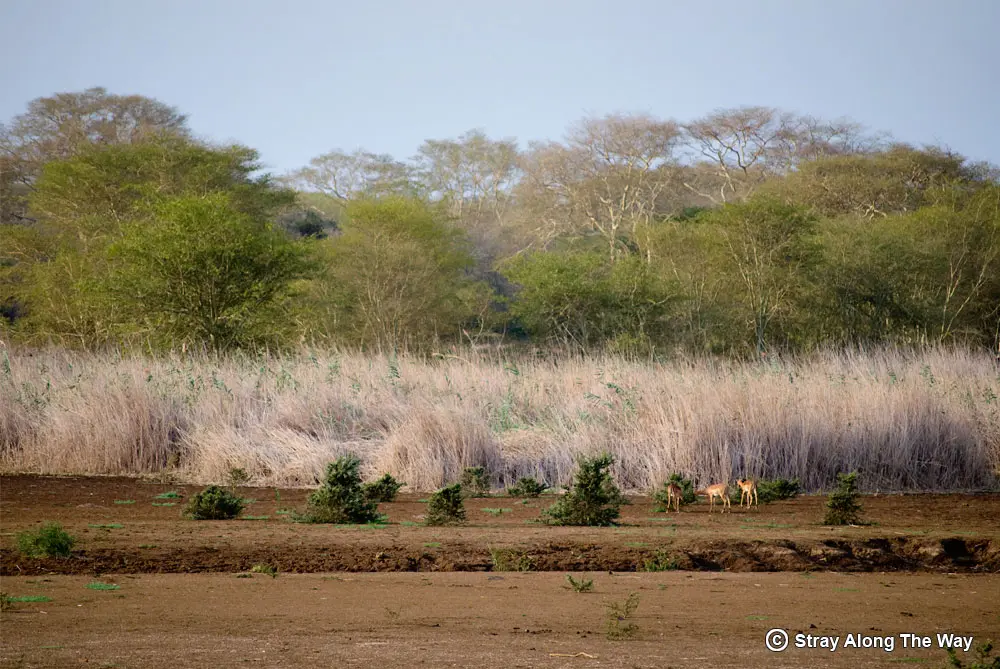
The park facilities include a reception area with a small shop, basic supplies and information. The nearby town of Ndumo has local trading stores and fuel if you need to stock up.
Birding in Ndumo Game Reserve
Birdwatchers consider Ndumo a pilgrimage site. With over 430 species recorded, it has the highest bird count of any reserve in South Africa. The mixture of wetland, forest, and savannah habitats draws an astonishing variety of birds, many of which are rarely seen elsewhere in the country.
Among the most prized sightings are Pel’s Fishing Owl, Southern Banded Snake Eagle, African Broadbill and Narina Trogon. In summer, migratory species boost the bird count even further, making late spring to early autumn the best time for serious birders to visit.
Guided birding walks are a must. The local rangers are deeply knowledgeable, and their familiarity with the area’s trails and hotspots dramatically increases your chances of seeing rare birds. Walks generally begin early in the morning and last around 2–3 hours, covering bush tracks, pan edges, and forest margins. Along the way, you may also encounter nyala, duiker, and vervet monkeys.
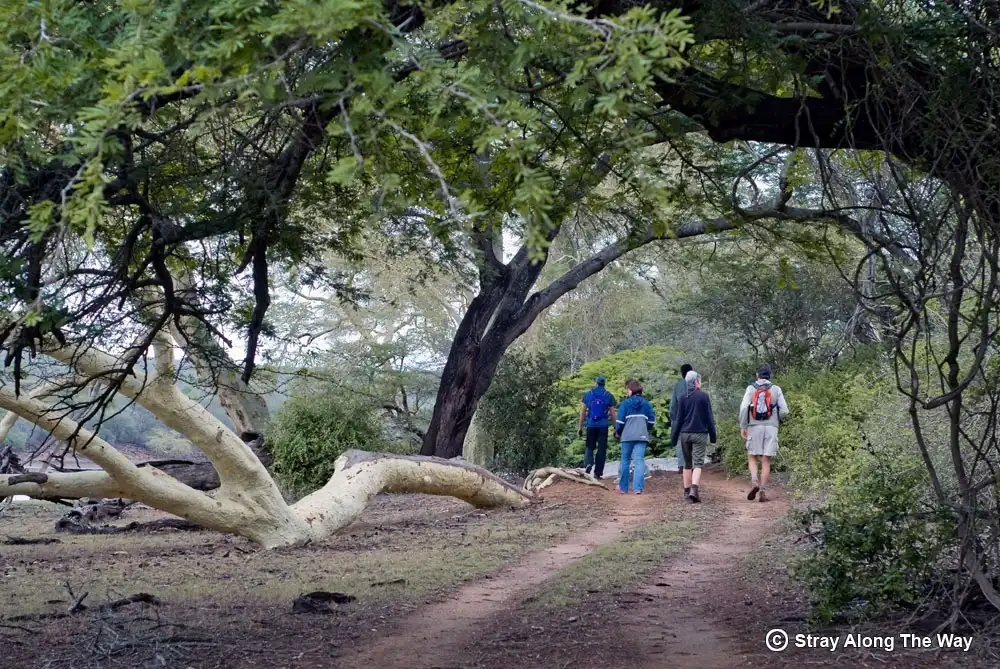
We recommend booking walks at least one day in advance at the reception. Bring binoculars, a good bird book or app, and sturdy walking shoes. Walks are usually slow-paced, focused on sounds and subtle movements.
Even if you never leave the campsite, you’ll likely spot dozens of species. During our visit, we observed White-browed Robin-Chats singing from low branches, sunbirds darting among flowering shrubs, and even an African Eagle Owl chick perched above the reception building.
Map of Ndumo Game Reserve
Our visit to Ndumo Game Reserve
Ndumo had been on our radar for years, but its remote location meant we kept pushing it to the bottom of the list. On most trips up north, we ended up crossing into Mozambique or visiting the coastal parks further south. But when we finally decided to carve out time for Ndumo, we found ourselves wondering why we had waited so long.
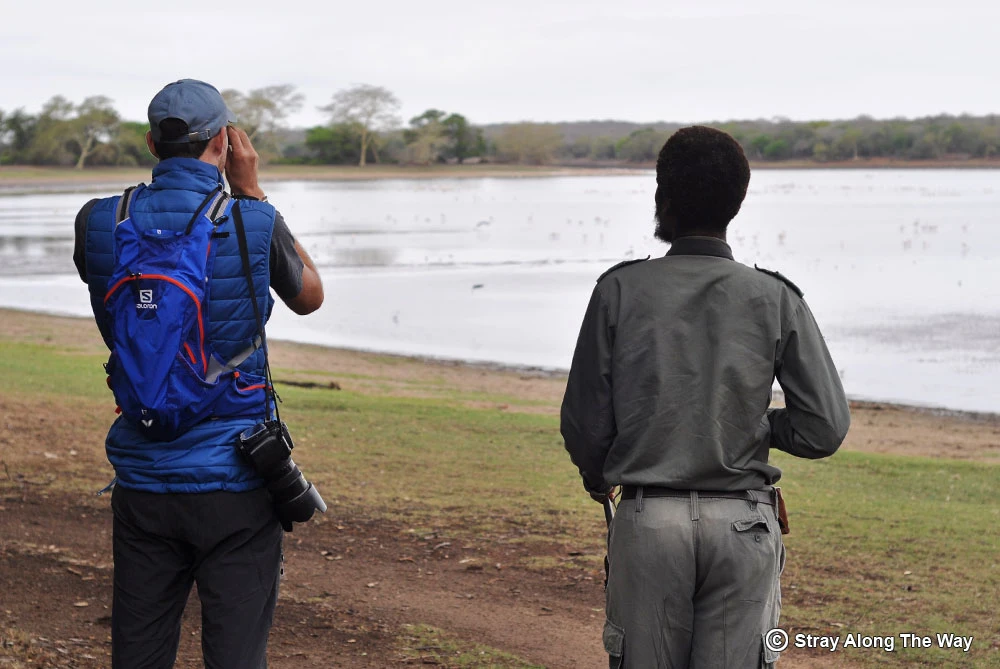
Arriving in the late afternoon, we were struck by the peacefulness of the place. There was no rush to spot the Big 5, no queues at the gates, and no engine noise beyond our own. It felt immediately immersive. After checking in at the modest reception, we made our way to the campsite, which was quiet and shaded by large trees. Within minutes, we had our first visitors—a group of nyala grazing quietly on fallen flowers.
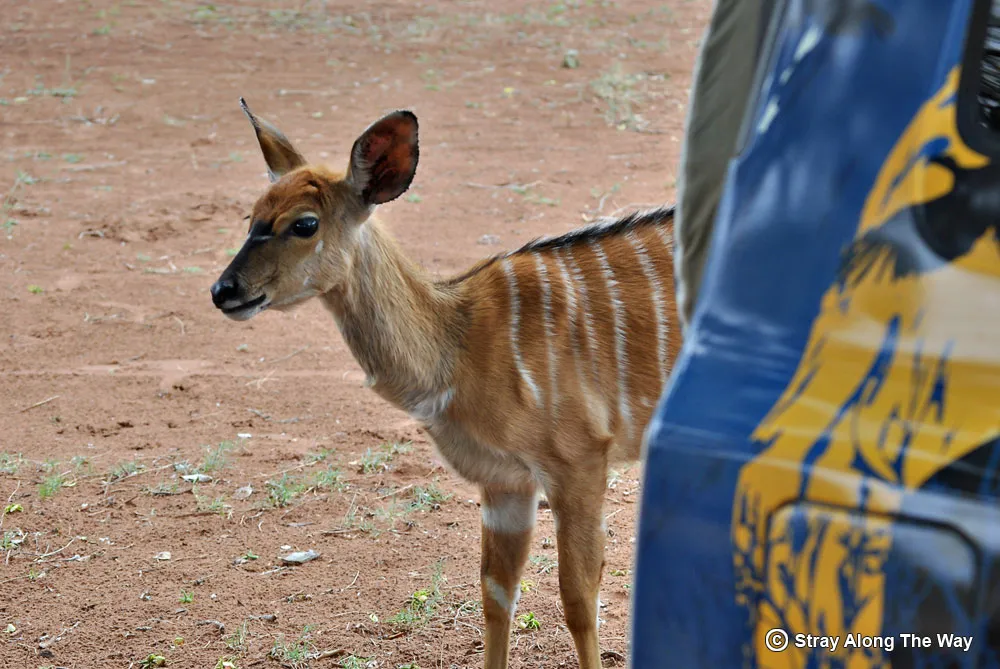
We spent the next few days driving the reserve slowly, stopping at almost every hide and picnic site. Red Cliffs Picnic Site became a favourite. The view down onto the uSuthu River was stunning, and we lingered over lunch while watching a group of buffalo moving along the far bank.
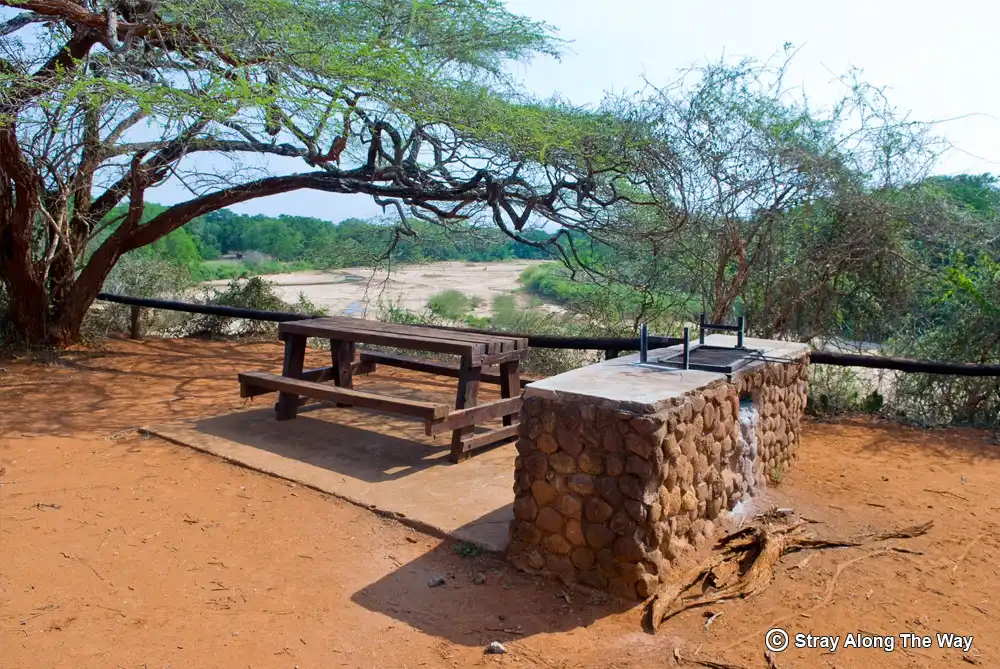
We also joined a morning birding walk with one of the rangers. Starting just after sunrise, the light was perfect and the air alive with birdsong. We spotted a Purple-crested Turaco flitting through the canopy, watched bee-eaters diving after insects, and even saw a pair of White-backed Night Herons hiding among reeds. It was easily one of the best birding walks we’ve done in South Africa.
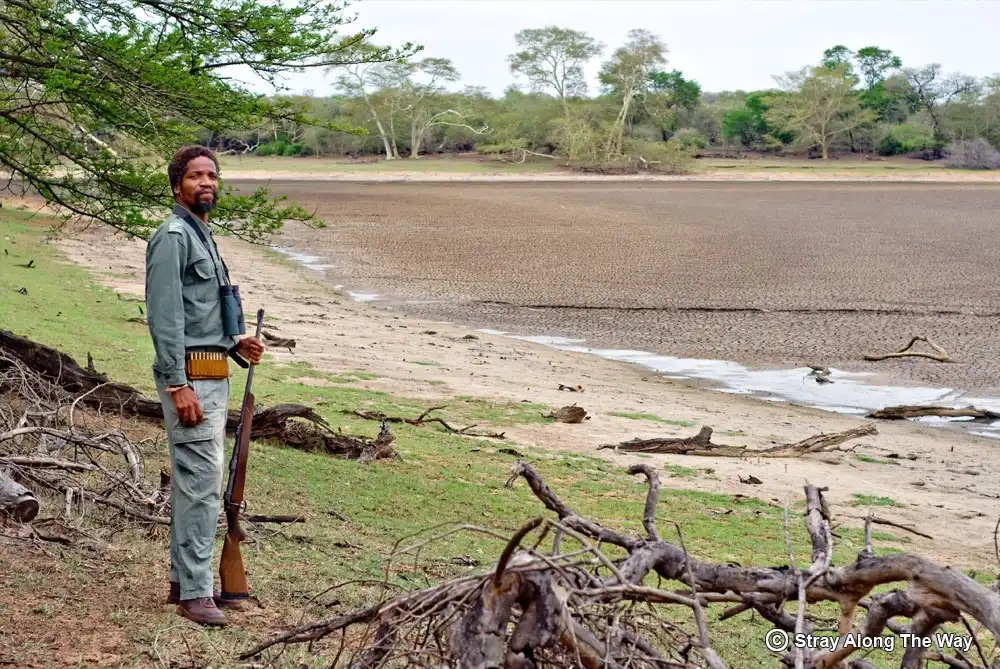
The lack of big predators makes it easier to relax and take in the details. We spent time photographing frogs and spiders near the hides, watching dragonflies hover above the pans, and identifying plants we hadn’t seen before. It was a slower, more intentional kind of wilderness experience.
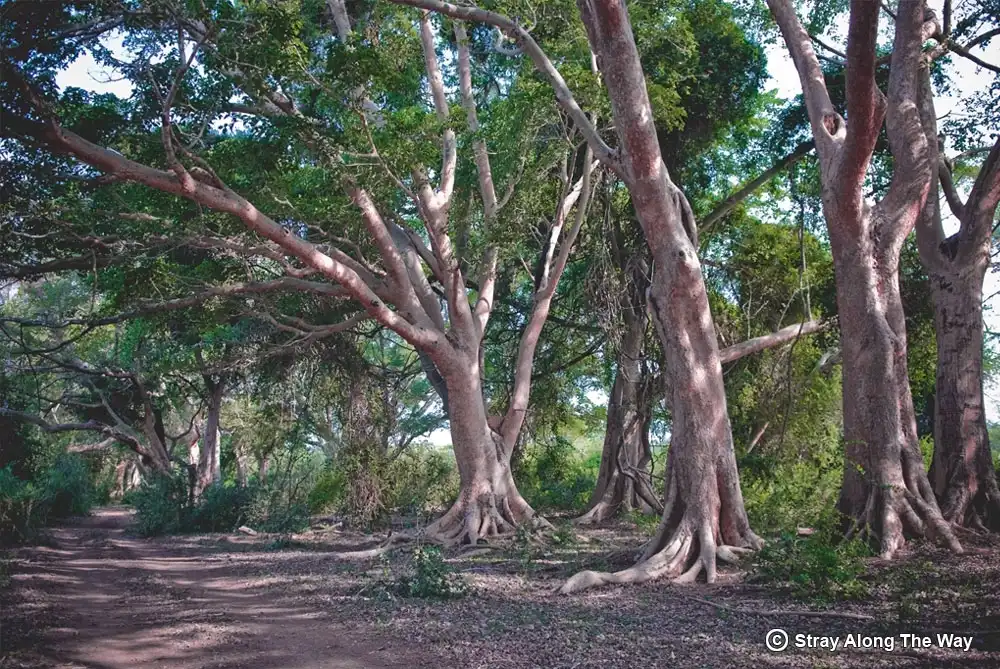
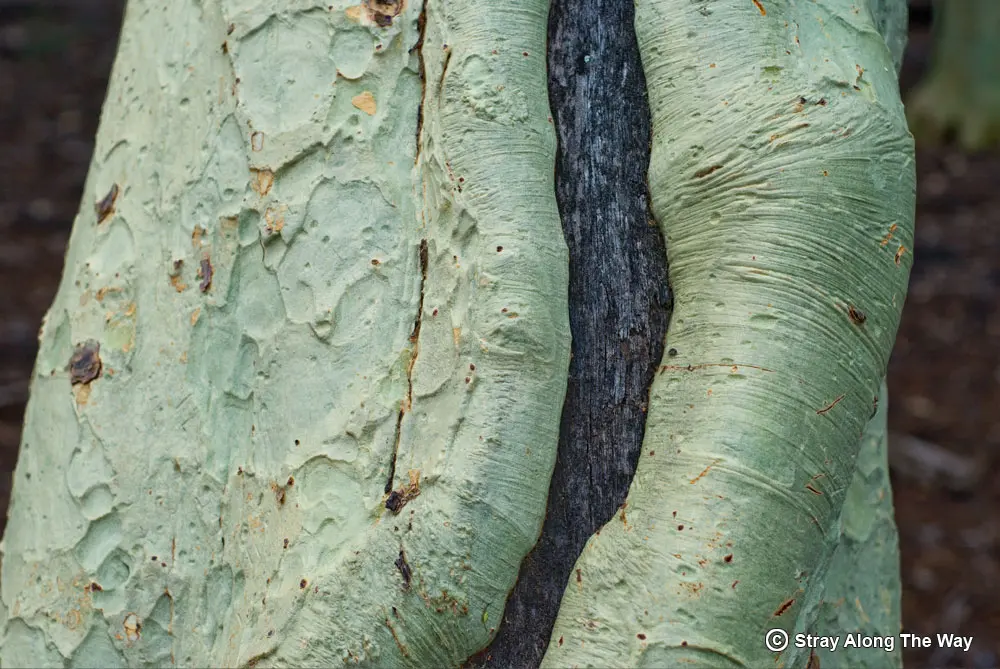
Places to stay at Ndumo Game Reserve
Accommodation at Ndumo is managed by Ezemvelo KZN Wildlife and includes a basic but well-kept resort with both camping and self-catering options.
The self-catering units offer simple comforts like beds, bedding, hot water, a fridge, and cutlery. Ablution facilities and a shared kitchen are available. These units are ideal for couples or families wanting an affordable stay within the reserve.
The campground is located near the main reception area and includes shaded sites, electricity points, and braai facilities. While the setup is not fancy, it offers excellent access to the rest of the reserve and a good chance to see birds and small mammals right from your site.
There is also a small swimming pool—much appreciated on hot summer days.
Bookings can be made through the Ezemvelo website or their central reservations office.
Important information
Opening and Closing Times (by season)
What to Bring
Directions to Ndumo Game Reserve (from Durban)
Get onto the N2 heading north out of Durban and follow the freeway for roughly 300km until you pass the town of Mkhuze. There are a number of toll booths on this stretch so be sure to have cash on hand to pay at each stop. About 2.5km outside of Mkhuze, turn right onto the P522 (heading towards Jozini). Keep with the P522 for roughly 56km. At the T-Junction, turn right to stay with the P522 and follow the road for another 11km. Keep to the left to join the P435 and continue straight for another 5km. Turn left at the T-junction to stay with the P435 and follow the road for 11km. Once you get to the small town of Ndumo, keep a look out for the Ndumo Game Reserve signs to the left. Follow this road for a short while to get to the main gate.
Click here for a link to these directions on Google Maps.
Contact Info
Entry Fee
Entry fees are managed by Ezemvelo KZN Wildlife and vary by visitor category. Check the latest rates on their official website or call ahead for current prices.
Best Time to Visit
Late spring to early autumn (October to April) is best for birding and game viewing, with warm weather and higher bird activity. Winter offers cooler temperatures and easier driving conditions.
General Information
Facilities
Health & Safety
Visitor Guidelines
Nearby Services
Important Note
Ndumo is a remote reserve. Bring all essentials with you, especially food, drinking water, and medications. Power cuts may occur, so carry a flashlight or headlamp.
Caution
Road conditions can be challenging after rain, especially in summer. Check with reception for updates before heading out. Watch for crocodiles near pans and riverbanks—avoid approaching water’s edge.

